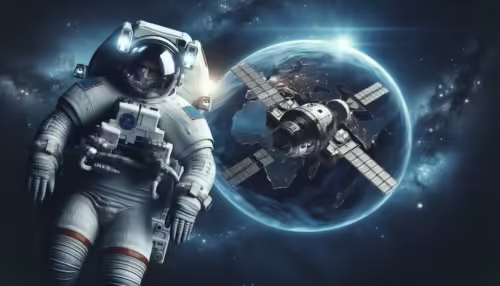Have you ever wondered what secrets the universe holds and how we manage to explore them through the lens of European cooperation? The European Space Agency (ESA) opens up a fascinating world of celestial exploration, bringing together brilliant minds from across continents to unlock the mysteries beyond our atmosphere. In an era where space exploration is not just a field but a crucial part of human progress, ESA missions stand as a testament to science, curiosity, and the indomitable spirit of discovery.
In this exploration of ESA missions, we will dive into insights from astronauts, specific missions like Rosetta and Mars Express, and delve into the clean space initiatives and open access policies at ESA. As you journey through this narrative, you’ll discover the historical background, current trends, and future implications of these groundbreaking endeavors.
Table of Contents
Historical Context of ESA Missions
Foundation of Exploration
ESA was established in 1975 with the mission to ensure that European countries had a strong representation in space exploration. Unlike its American counterpart NASA, ESA operates through a consortium of member states, leveraging resources, talent, and funding to execute complex missions such as the International Space Station (ISS), satellite launches, and planetary exploration.
Validating Their Mission
Over the decades, ESA has repeatedly proven its capacity to undertake ambitious projects. For instance, the collaboration on the ISS not only demonstrated technological prowess but also symbolized international harmony. The agency, through missions like Giotto to Halley’s Comet, showcased Europe’s commitment to unlocking the secrets of the cosmos with scientific rigor and innovation as guiding forces.
Current Trends in ESA Space Exploration
Innovative Missions
One cannot speak of ESA’s contributions without mentioning missions like Rosetta and Mars Express. Rosetta made history as it became the first mission to orbit a comet, 67P/Churyumov-Gerasimenko, providing unsurpassed data and imagery that have reshaped our understanding of these celestial bodies. Meanwhile, Mars Express, launched in 2003, continues to explore the Martian atmosphere and geology, offering invaluable insights into our neighboring planet.
ESA Astronauts on the International Space Station
ESA’s involvement with the ISS is a testament to its commitment to human spaceflight. Experienced astronauts from Europe, like Samantha Cristoforetti and Alexander Gerst, have logged significant hours in space, conducting experiments ranging from biology to material sciences, which contribute not only to scientific knowledge but also to future human settlements in space.
Clean Space Initiatives
Understanding the increasing issue of space debris, ESA has spearheaded Clean Space initiatives, aiming to reduce space mission impacts on Earth’s orbit and beyond. These include developing sustainable space technologies and strategies to minimize debris creation, signifying the agency’s leadership in responsible space exploration.

Key Concepts and Definitions
Open Access Policy at ESA
ESA advocates for open access to the data and insights derived from its missions. This policy ensures that scientific communities worldwide can benefit from space exploration findings, promoting shared knowledge and collaborative advancements.
Satellite Missions and Implications
Satellite technology underpins much of our modern communication, navigation, and Earth observation. ESA has numerous satellites in orbit, each contributing vital data on climate change, disaster management, and environmental monitoring.
Detailed Analysis and Examples
Case Study: The Rosetta Mission
Rosetta’s journey to Comet 67P revolutionized our understanding of the primordial solar system. By analyzing the composition of the comet, scientists gathered data hinting that comets could have been crucial in bringing water and organic compounds to Earth—a theory supporting the origins of life as we know it.
Mars Express and Its Discoveries
Mars Express has provided significant information on Mars’s geological evolution and atmospheric conditions, including the detection of water in ice form, pointing to the potential for life. The spacecraft’s radar instrument continues to be vital in understanding the planet’s subsurface structures.

Comparative Analysis: Different Perspectives on Space Exploration
Space Agencies and Their Missions
| Aspect | NASA | ESA | Roscosmos |
|---|---|---|---|
| Mission Focus | Diverse, spanning human, robotic, and satellite | Heavy emphasis on robotics and science | Primarily human and satellite |
| Collaboration | Global partners, high budget | European partners, cost-effective | National focus, growing international ties |
| Technology | Advanced, pioneering technologies | Innovative, sustainable tech | Established tech, newer adaptation |
While NASA might lead in budget and scope, ESA is recognized for its innovation and efficiency, maintaining a significant presence in robotic and scientific missions. Roscosmos, though evolving, complements these agencies with its strong human spaceflight capacity.
Assessing the Impact: ESA’s Role in Scientific Advancements
ESA’s missions have resulted in breakthroughs that have redefined human understanding of the universe. The data from the Rosetta mission challenged existing theories on the formation of solar systems, while Mars Express has supported hypotheses about potential life on Mars. ESA’s commitment to open access ensures that these findings fuel scientific inquiries worldwide, creating a ripple effect of knowledge and innovation.
Future Directions and Implications
Future Missions and Predictions
ESA continues to evolve, with missions like ExoMars and the Jupiter Icy Moons Explorer (JUICE) on the horizon. These missions aim to further probe the possibilities of life beyond Earth, using technologies that have become increasingly precise and capable of delving deeper into Western and lesser-explored celestial bodies.
Implications for Humanity
As space exploration advances, the impacts on society are profound. ESA’s missions contribute to technological growth, educational advancements, and the enhancement of international cooperation. Governments and societies must weigh these benefits against the costs, ensuring sustainable and ethical explorations.
What do you think the ultimate goal of space exploration should be? Understanding our origins, securing resources, or even settling on other planets could present entirely new paradigms for human evolution.

Conclusion
In summary, ESA’s pioneering spirit continues to shed light on the cosmos while fostering innovation, discovery, and international collaboration. From the data yielded by Rosetta and Mars Express to the human achievements on the ISS, ESA stands at the forefront of exploring the final frontier. As we ponder the implications of these ventures for the future, ESA’s missions assure us that the sky is not the limit—it is just the beginning.
Consider engaging with ESA’s offerings and tapping into their resources to enhance your understanding and participation in this ongoing journey. The universe, in its vast and infinite complexity, awaits.
ESA astronaut class of 2022: Astro Chat with Marco Sieber and Claude Nicollier

